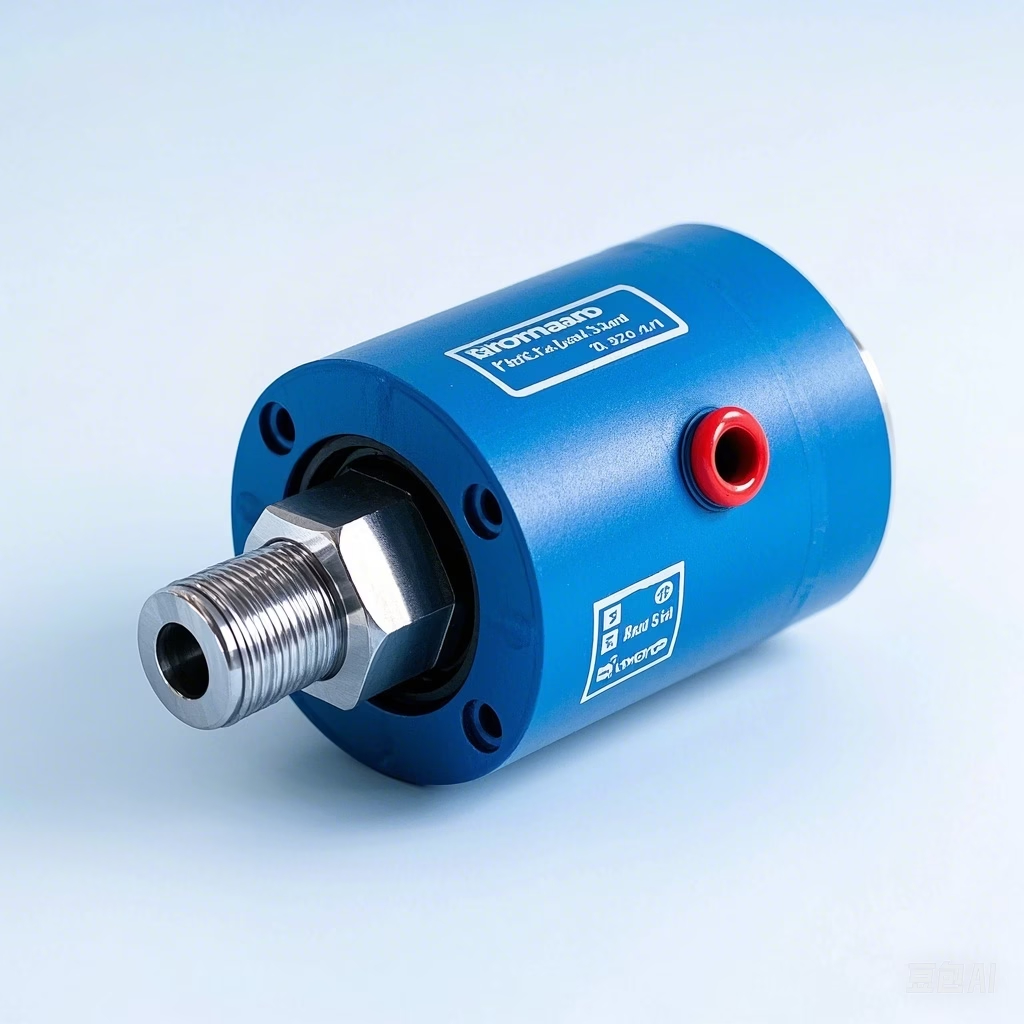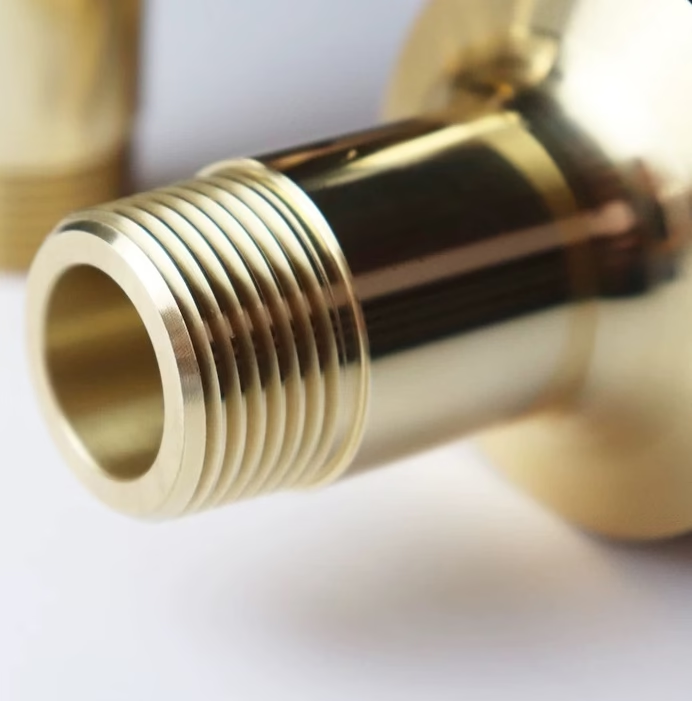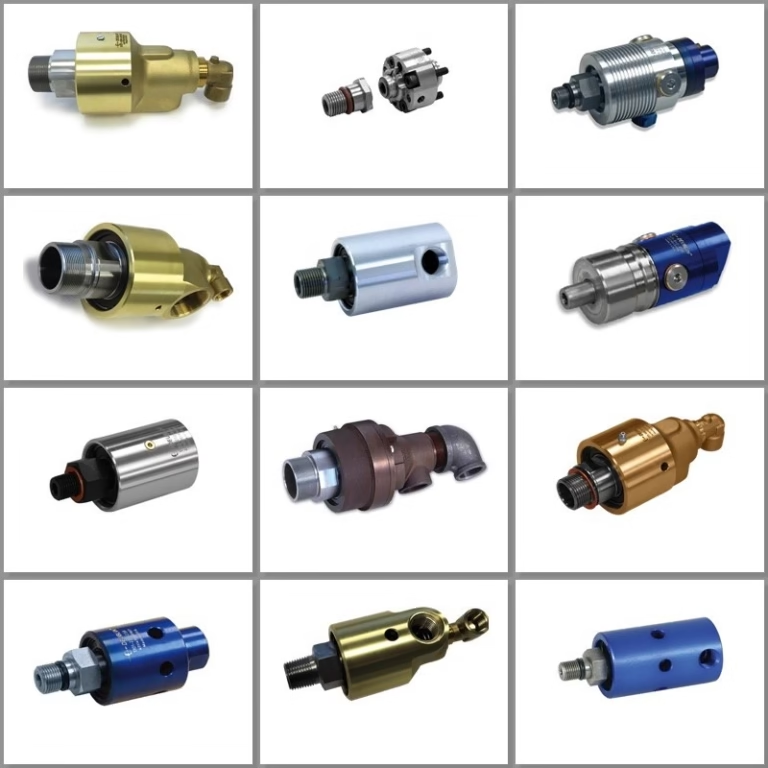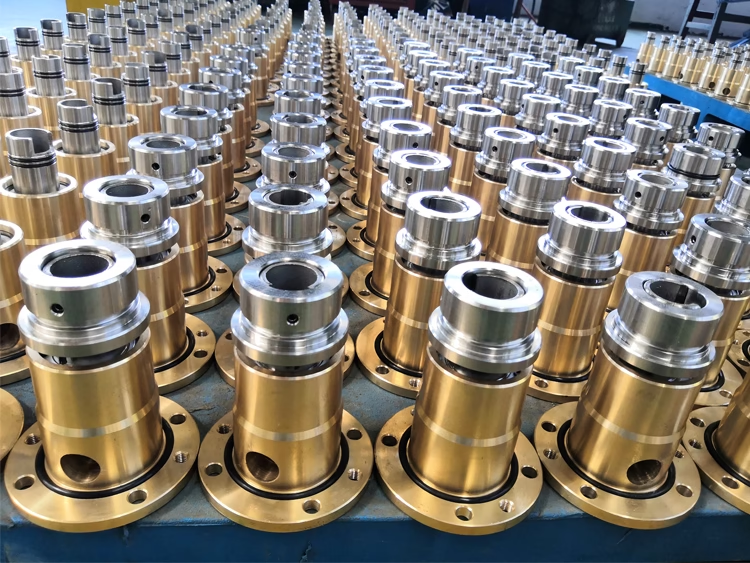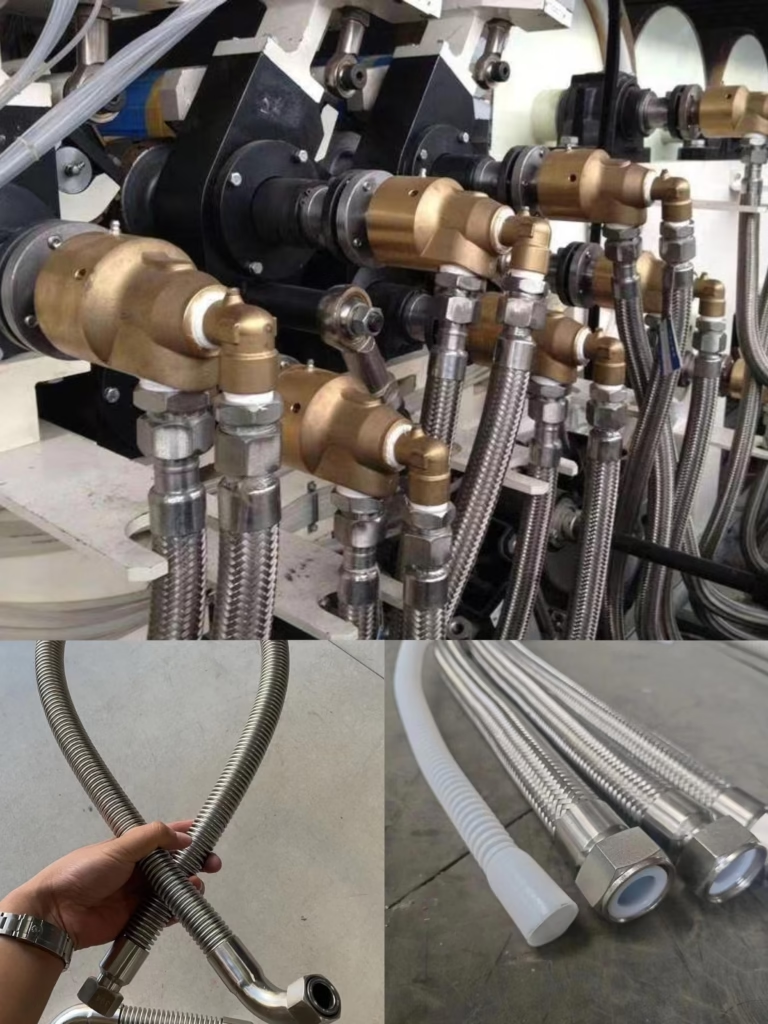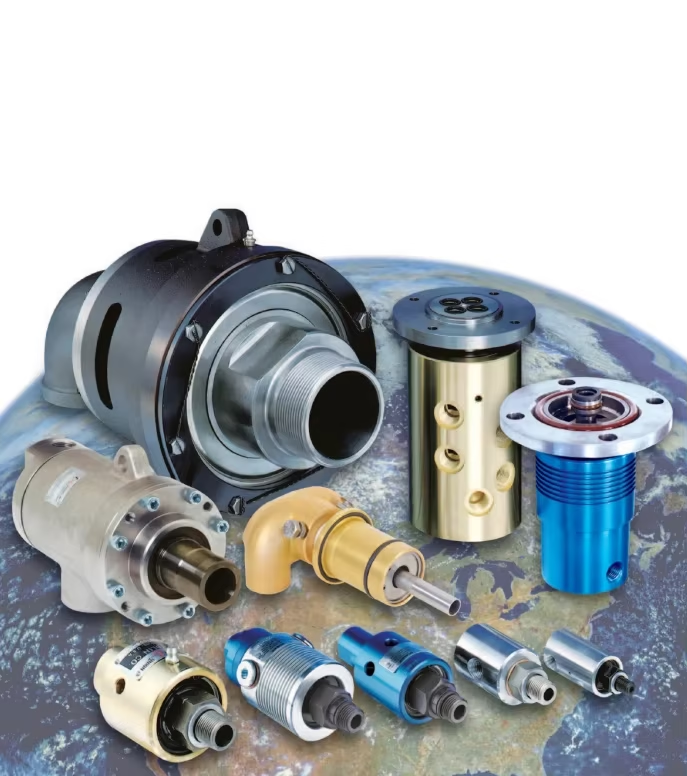Everything You Need to Know About Standard Rotary Joints
Everything You Need to Know About Standard Rotary Joints: Design, Applications, and Best Practices
Introduction
In industrial machinery and equipment, the ability to transfer fluids, gases, or power between stationary and rotating components is critical for seamless operation. Standard rotary joints, also known as rotary unions or swivel joints, play a pivotal role in enabling this motion while maintaining a leak-free connection. These versatile components are widely used in industries ranging from manufacturing and energy to aerospace and food processing.
In this comprehensive guide, we’ll delve into the design principles, operational mechanics, key applications, and best practices for selecting and maintaining standard rotary joints. Whether you’re an engineer, a maintenance professional, or a business owner in an industrial sector, understanding these essential components will help you optimize equipment performance, reduce downtime, and enhance safety.
What Are Standard Rotary Joints?
Definition and Core Functionality
A standard rotary joint is a mechanical device that allows the transfer of media (such as water, steam, hydraulic oil, air, or electricity) between a stationary pipeline and a rotating part, such as a drum, spindle, or conveyor. Unlike fixed connections, rotary joints accommodate 360-degree rotation while maintaining a secure seal, preventing leaks and ensuring continuous flow.
Basic Components
Most standard rotary joints share common structural elements:
1. Rotating Shaft (Rotor):
Connects to the moving component and rotates with it.
2. Stationary Housing (Stator):
Attaches to the fixed pipeline and contains the sealing mechanism.
3. Seals:
Critical for preventing leaks; common types include mechanical face seals, O-rings, or lip seals.
4. Bearings:
Support the rotating shaft and reduce friction (ball bearings, roller bearings, or sleeve bearings).
5.Inlet/Outlet Ports:
Channels for media entry and exit, often threaded or flanged for easy installation.
How Standard Rotary Joints Work
Operational Mechanics
The core principle of a rotary joint is to balance rotational movement with a tight seal. As the rotor spins, the stator remains fixed, and the seals between them create a barrier that prevents media from escaping. The bearings ensure smooth rotation with minimal wear, while the design of the ports allows for consistent flow even at high speeds or pressures.
Key Operational Parameters
Rotation Speed:
Measured in RPM (revolutions per minute), affecting bearing and seal durability.
Operating Pressure:
Ranges from low-pressure air systems (5 PSI) to high-pressure hydraulic applications (over 3,000 PSI).
Temperature Range:
Depends on the media and materials; some joints handle cryogenic temperatures (-200°C), others high heat (500°C+ for steam).
Media Compatibility:
Materials like stainless steel, brass, or PTFE are chosen based on the fluid or gas being transferred (e.g., corrosive chemicals require resistant alloys).
Advantages of Standard Rotary Joints
1. Versatility in Media Transfer
Standard rotary joints can handle a wide range of substances:
Liquids (coolants, lubricants, water)
Gases (compressed air, nitrogen)
Semi-solids (pastes, slurries)
Even electrical signals (in hybrid joints with slip rings).
2. Leak Prevention and Safety
High-quality seals and precision manufacturing reduce the risk of leaks, which is crucial in industries like chemical processing, where spills could cause environmental harm or safety hazards.
3. Energy Efficiency
By minimizing friction through proper bearing design, rotary joints help reduce energy consumption, especially in high-speed applications.
4. Durability and Low Maintenance
With proper installation and regular maintenance, standard rotary joints can last for years, even in harsh environments.
Types of Standard Rotary Joints The classification of rotary joints depends on their function, media type, and operational environment. Below is a detailed breakdown:
Hydraulic and Pneumatic Rotary Joints Design:
Features multiple sealed passages for hydraulic oil, coolant, or compressed air. Use Cases: Hydraulic actuators, rotating tables, and indexers in CNC machining. Example: Kadant’s PTX series for high-pressure steam in paper mills.
Electrical Slip Rings (Power and Signal) Power Slip Rings:
Transmit high-current electricity (e.g., 10–1,000A) for motors or sensors.
Signal Slip Rings:
Handle low-voltage data/control signals (e.g., 4–20mA or Ethernet).
Innovation:
RF rotary joints for radar systems, operating at frequencies up to 40 GHz.
Fiber Optic Rotary Joints Technology: Use prisms or reflectors to transmit light without physical contact.
Advantages: Immunity to EMI, longer lifespan than electrical counterparts.
Applications: Military surveillance, medical endoscopy, and wind turbines.
Gas-Liquid Integrated Solutions Design: Combines gas and liquid pathways in a single unit. Example: JINPAT’s multifunctional slip rings for oil/gas drilling equipment.
Common Applications Across Industries
Manufacturing and Packaging
Paper and Printing: Transferring steam to drying cylinders in paper mills or ink to rotating printing presses.
Plastic Processing: Feeding cooling water to injection molding machines or extruders.
Food and Beverage: Conveying hot water or cleaning agents in bottle-washing systems; handling edible oils in processing lines.
Energy and Utilities
Power Generation: Connecting steam turbines to rotating shafts in power plants.
Renewables: Facilitating fluid transfer in wind turbine pitch control systems or solar tracking mechanisms.
Oil and Gas: Managing hydraulic fluid in drilling rig swivels or transferring crude oil in rotating storage tanks.
Aerospace and Defense
Aircraft Systems: Enabling fuel flow in rotating wings or hydraulic fluid in landing gear mechanisms.
Military Equipment: Supporting motion in missile guidance systems or armored vehicle turrets.
Construction and Heavy Machinery
Excavators and Cranes: Transmitting hydraulic power to rotating booms or winches.
Asphalt Plants: Handling hot oil for heating mixing drums.
Choosing the Right Standard Rotary Joint: A Selection Guide
1. Define Your Media and Operating Conditions
Media Type: Corrosive? High-viscosity? Abrasive? Select materials (e.g., carbon steel for general use, stainless steel for corrosive environments, PTFE for chemical resistance).
Pressure and Temperature: Ensure the joint’s rated limits exceed your system’s requirements (allow a 20% safety margin).
Speed: High-speed applications (e.g., 10,000+ RPM) need precision bearings and balanced rotor/stator designs.
2. Seal Type Selection
Mechanical Face Seals: Ideal for high-pressure, high-temperature applications (e.g., steam); consists of a rotating and stationary seal face (often tungsten carbide or carbon).
O-Ring Seals: Cost-effective for low-pressure, low-speed use (e.g., air or water).
Lip Seals: Used in dusty or contaminated environments to prevent particle ingress.
3. Connection Types
Threaded Ports: Easy to install, suitable for low to medium pressure (NPT, BSP, or metric threads).
Flanged Connections: Provide a stronger seal for high-pressure systems (ANSI, DIN, or custom flanges).
Hose Barb Fittings: For flexible hoses in low-pressure, low-vibration setups.
4. Bearing Design
Ball Bearings: Offer high-speed capability and precision (common in industrial applications).
Roller Bearings: Handle heavy radial loads (suitable for large rotating machinery).
Sleeve Bearings: Simple, cost-effective, but best for low-speed, low-load scenarios.
5. Key Considerations for Selection
Media Type and Rating Compatibility: Match seal materials to media (e.g., Viton® for chemicals).
Pressure/Temperature: For steam applications, opt for balanced seals to prevent condensate buildup.
Speed and Durability High-Speed Applications: Use ceramic bearings and hardened steel races. Lifecycle: DuraSeal™ technology offers a 50% longer service life than traditional seals.
Maintenance Costs Modular Design: CSS allows in-situ maintenance without dismantling pipelines.
IoT Sensors: Predictive maintenance reduces unplanned downtime by 70%.
Industry Standards and Certifications
Look for joints compliant with ISO 9001 (quality management), ASME B16.22 (for bronze joints), or API 676 (for petroleum industry applications) to ensure reliability and safety.
Installation Best Practices
1. Align the Joint Correctly
Misalignment is a leading cause of seal wear and leaks. Use laser alignment tools to ensure the rotor and stator are concentric (max deviation: 0.002 inches per inch of shaft length).
2. Secure Connections Tightly
Over-tightening can damage threads or flanges; use torque wrenches to follow manufacturer specs (e.g., 20-30 ft-lbs for 1/2” NPT threads).
3. Pre-Lubricate Bearings (If Required)
Some joints come pre-lubricated, but for others, high-temperature grease (e.g., lithium-based for general use, molybdenum disulfide for extreme conditions) must be applied before installation.
4. Test for Leaks
Run a pressure test at 1.5x the rated pressure for 10 minutes. Use soap bubbles for gas systems or a dye penetrant for liquid media to detect leaks.
Maintenance and Troubleshooting
Routine Maintenance Schedule
Frequency Task Details
Daily Visual Inspection Check for leaks, unusual vibrations, or noise.
Monthly Lubrication: Re-grease bearings if applicable (follow manufacturer guidelines).
Quarterly Performance Check: Measure temperature, pressure, and RPM against baseline values.
Annually, disassemble and clean. Inspect seals, bearings, and internal surfaces; replace worn components.
Common Issues and Solutions
Leaking Seals
Cause: Wear from misalignment, particle contamination, or incorrect seal material.
Fix: Realign the joint, clean or replace seals, and ensure media compatibility.
Excessive Vibration or Noise
Cause: Loose connections, bearing damage, or unbalanced rotor.
Fix: Tighten fittings, replace bearings, or balance the rotating assembly.
Overheating
Cause: Insufficient lubrication, high-speed operation without proper cooling, or inadequate heat dissipation.
Fix: Add lubricant, check cooling systems, or upgrade to a heat-resistant design.
Case Studies and Real-world Applications
High-Speed Paper Mill Automation Challenge:
Transfer steam at 250°C and 150 psi to rotating dryer rolls. Solution: Kadant’s ELS™ joint with DuraSeal™ technology reduced condensate by 80%.
Satellite Communication Systems Requirement:
Transmit 20 GHz signals through a rotating antenna. Solution: Deublin’s coaxial RF joint with beryllium copper contacts ensured <0.5 dB loss.
Deep-Sea Drilling Rigs Challenge:
Withstand 3,000 psi mud pressure and saltwater corrosion. Solution: Maier’s DQ series with carbide seals and titanium housings achieved a 5-year service life.
Innovations and Market Trends in Rotary Joint Technology
1. Smart Rotary Joints with IoT Sensors
Modern joints integrate sensors to monitor temperature, pressure, and vibration in real-time, enabling predictive maintenance. Data is transmitted via IoT platforms, reducing downtime through early fault detection.
2. Eco-Friendly Materials
As sustainability becomes a priority, manufacturers are using recycled metals and bio-based polymers for seals, reducing environmental impact without compromising performance.
3. Miniaturization for Compact Systems
In aerospace and medical devices, micro rotary joints with diameters under 10mm allow fluid transfer in tight spaces, supporting the trend toward smaller, more efficient machinery.
4. Hybrid Joints for Multi-Media Transfer
Single joints now handle combinations of fluids, gases, and electrical signals, simplifying designs in complex systems like robotic arms or CNC machines.
Case Study: Optimizing a Packaging Line with Standard Rotary Joints
A food packaging company was experiencing frequent leaks and downtime in their bottle-labeling machine due to faulty rotary joints. The original joints used O-ring seals incompatible with the hot water sanitization process, leading to seal degradation.
Solution:
I replaced the O-rings with mechanical face seals made of silicon carbide.
Upgraded to stainless steel housing for corrosion resistance.
Implemented a quarterly maintenance schedule with thermal imaging to monitor joint temperature.
Results:
80% reduction in leaks
30% longer seal lifespan
$50,000 annual savings in downtime and repair costs
Frequently Asked Questions (FAQs)
Q1: Can standard rotary joints handle both axial and radial loads?
Most standard joints are designed for rotational motion and minimal radial loads. For heavy loads, consider specialized joints with reinforced bearings or consult a manufacturer for custom solutions.
Q2: How do I choose the right seal material for my application?
Start by identifying the media (chemical composition, temperature, pressure) and operating environment (clean, dusty, corrosive). Common materials include:
PTFE: Chemical resistance, low friction
Tungsten Carbide: High hardness for abrasive media
Carbon: Self-lubricating, suitable for high-speed applications
Q3: What’s the difference between a standard rotary joint and a custom-designed one?
Standard joints follow common specifications (e.g., thread sizes and pressure ratings) and are available off-the-shelf. Custom joints are engineered for unique requirements, such as non-standard dimensions, extreme conditions, or multi-channel configurations.
Q4: Can I install a rotary joint myself, or do I need a professional?
While basic installations are feasible with proper tools and guidelines, complex systems (high-pressure, high-speed) should be installed by trained technicians to ensure alignment and safety.
Future Trends and Innovations
Material Science Self-Lubricating Composites:
Reduce friction in high-temperature applications. 3D-Printed Seals: Custom geometries for complex media pathways.
IoT Integration Smart Sensors:
Monitor seal wear in real time via cloud platforms. Predictive Algorithms: Forecast failures with 95% accuracy.
Sustainability Circular Design:
Modular components for easy repair/reuse. Eco-Friendly Lubricants: Biodegradable oils for food and marine applications.
Conclusion
Standard rotary joints are unsung heroes of industrial machinery, enabling seamless motion and media transfer across diverse applications. By understanding their design, selecting the right model for your needs, and following best practices for installation and maintenance, you can unlock benefits like improved efficiency, reduced downtime, and enhanced safety.
As technology evolves, so do rotary joint solutions—from IoT-enabled smart joints to eco-friendly materials, the future promises even more innovative ways to meet industrial challenges. Whether you’re optimizing an existing system or designing a new machine, prioritizing quality and compatibility in your rotary joint selection will pay dividends in long-term performance.
For more insights on industrial components and maintenance strategies, subscribe to our blog or contact our team for personalized recommendations.

